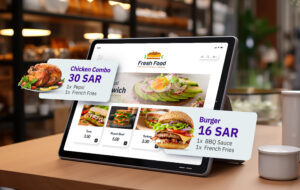In a world where the restaurant industry is continually reshaped by modern dynamics, data analytics has emerged as the ultimate catalyst for success. From renowned chains to local eateries, the deployment of data analytics has become pivotal in navigating the contemporary culinary landscape. But how, exactly, do data analytics tools drive the remarkable growth of restaurant revenue?
What is Data Analytics?
Restaurant data analytics is the practice of collecting, processing, and analyzing various types of data generated within a restaurant environment to gain valuable insights and make informed decisions.
What Does Data Analytics Entail?
- Customer Insights: POS data provides valuable information about customer behavior, such as peak dining hours, preferred menu items, and average spending per visit.
- Sales Trends: Identifying patterns in sales data, including peak hours and popular items.
- Inventory Management: Monitoring inventory levels to prevent shortages or overstocking.
- Menu Optimization: POS data can reveal which menu items are performing well and which ones are underperforming.
- Employee Performance: POS data can also be used to evaluate the performance of staff members. It can track server efficiency, order accuracy, and customer satisfaction.
Our Foodics All-in-One Point of Sale Solution allows you to manage, track, and analyze all your data seamlessly in real time from anywhere. If your business operates across multiple branches or aggregators, you might want to consider a Business Intelligence tool, namely Foodics BI, which can provide invaluable insights by seamlessly tracking and consolidating data from all locations.
How Can Data Analytics Tools Help Increase Revenue?
Data-Driven Decision-Making
Analytics provide restaurant managers with the information needed to make informed decisions. Whether it’s expanding the business, changing pricing strategies, or introducing new menu items, data-driven insights reduce the risks associated with these decisions.
Let’s say you own a fast-casual chain and you’re considering expanding into a new location. POS data helps you identify areas with high customer demand for your type of cuisine. With this data-driven approach, you confidently open a new branch knowing that it will be successful and increase the chain’s bottom line.
Mastering Inventory Management
The art of managing inventory efficiently takes center stage. Data analytics empowers you to actively monitor the popularity of items on your menu, ensuring your stock aligns with demand. Consistently gathering and analyzing data will ensure that you don’t have shortages which will increase sales, enhance customer experience, and avoid disappointment.
Also read: Introduction to Restaurant Inventory Management Systems
Minimizing Food Wastage
Another benefit of mastering inventory management is minimizing food wastage. Data analytics zeroes in on the ebb and flow of your kitchen’s inventory, meticulously tracking what comes in and out of your restaurant’s inventory. This level of scrutiny encourages staff accountability in food preparation and delivery. The key here is to make sure you give the right amount of food on each plate in your restaurant. If you give too much or too little, it can make people not like your restaurant and can hurt your money.
Also read: 11 solutions for Reducing Food Waste In Restaurant
Crafting Intelligent Menus
Using data analytics tools can help you make better menus, and it’s not a shot in the dark. It’s like a guiding light that shows you which items on your menu are popular and which ones aren’t. You might be surprised to discover that your best-seller isn’t necessarily your most profitable item. Point-of-Sale data reveals which items are in high demand, potentially allowing the hidden potential of lesser-selling dishes to surface. With this information, you can cleverly advertise your best dishes and bring more customers to your restaurant, helping you achieve your restaurant’s goals.
If you are struggling with planning a Menu, You can always refer to our Menu Engineering feature
Enhanced Marketing Strategies
Effective marketing can greatly influence your restaurant’s success. Here, data analytics can be very helpful as it allows you to see how effective your current marketing strategy is and refine it as needed. Remember, marketing is not a one-day job, but an ongoing process. Small things like giving VIP guests their favorite drink or a free dessert can make a big difference. The real skill is in knowing your customers by name and recalling their preferred dishes from your menu, fundamentally reshaping your business paradigm.
Also read: Restaurant Online Reputation Marketing: Key Tips & Practices
Strategic Labor Cost Optimization
Paying your staff can be a big cost for your restaurant. Data analytics can help you see the whole picture and figure out the best way to schedule your workers. This insight enables you to minimize costs, especially during slower shifts where a reduced workforce suffices.
Think about holidays and busy times. If you use data to make smart schedules that mix temporary, part-time, and full-time workers, it can help you save money and make sure your restaurant is busy and profitable all year long.
Cost Reduction
Data analytics helps you identify areas where expenses can be trimmed without compromising quality, resulting in an increase in your profit margins. This may include renegotiating supplier contracts, optimizing energy usage, or reducing staff turnover through better training and retention strategies.
Wrapping Things Up
Data analytics tools can potentially deliver significant advantages to your business. The crucial step is learning to effectively interpret your restaurant’s data and leverage it to your benefit. By doing so, you gain insights into your restaurant’s expenses, top-selling dishes, and customer behavior while identifying opportunities to boost your bottom line with data-driven strategies.



